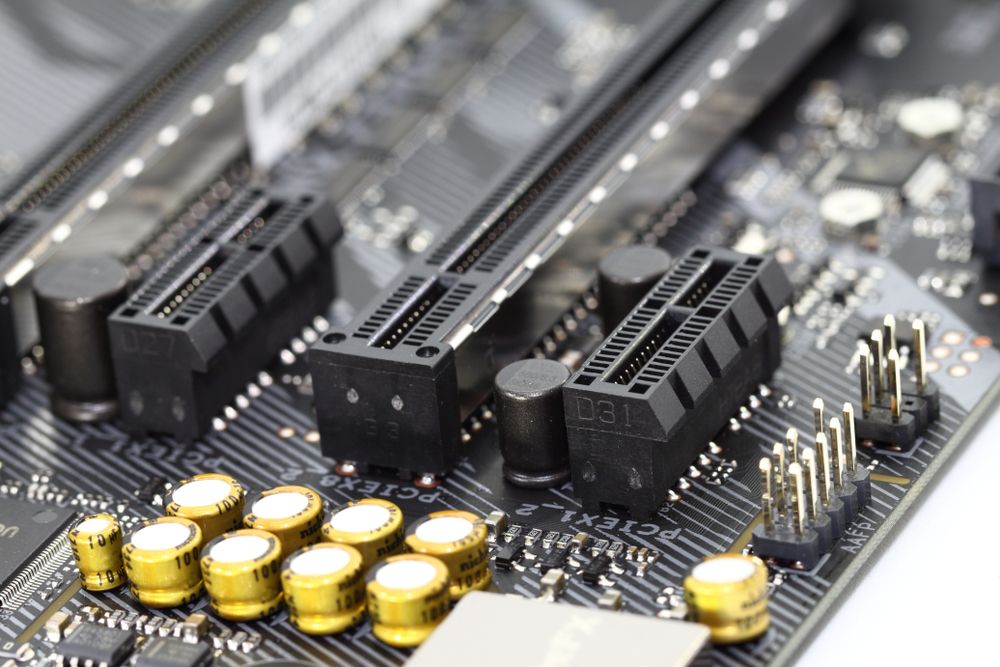PCIe (peripheral component interconnect express) is an interface standard for connecting high-speed components. Every desktop PC motherboard has a number of PCIe slots you can use to add GPUs (aka video cards aka graphics cards), RAID cards, Wi-Fi cards or SSD (solid-state drive) add-on cards. The types of PCIe slots available in your PC will depend on the motherboard you buy.
PCIe slots come in different physical configurations: x1, x4, x8, x16, x32. The number after the x tells you how many lanes (how data travels to and from the PCIe card) that PCIe slot has. A PCIe x1 slot has one lane and can move data at one bit per cycle. A PCIe x2 slot has two lanes and can move data at two bits per cycle (and so on).
You can insert a PCIe x1 card into a PCIe x16 slot, but that card will receive less bandwidth. Similarly, you can insert a PCIe x8 card into a PCIe x4 slot, but it’ll only work with half the bandwidth compared to if it was in a PCIe x8 slot. Most GPUs require a PCIe x16 slot to operate at their full potential.
PCIe Generations Compared
| Bandwidth | Gigatransfer | Frequency | |
| PCIe 1.0 | 8 GB/s | 2.5 GT/s | 2.5 GHz |
| PCIe 2.0 | 16 GB/s | 5 GT/s | 5 GHz |
| PCIe 3.0 | 32 GB/s | 8 GT/s | 8 GHz |
| PCIe 4.0 | 64 GB/s | 16 GT/s | 16 GHz |
| PCIe 5.0 | 128 GB/s | 32 GT/s | 32 GHz |
| PCIe 6.0 | 256 GB/s | 64 GT/s | 32 GHz |
Current PCIe Generations
PCIe standards currently come in three different generations: PCIe 1.0, PCIe 2.0, PCIe 3.0 and PCIe 4.0. Bandwidth doubles with each generation.
How do you know what performance you’ll get with a PCIe expansion card? Your PCIe card will run at the lowest generation present. So if you put a PCIe 2.0 card in a PCIe 3.0 slot, you’ll get PCIe 2.0 performance.
PCIe 4.0
The PCIe 4.0 standard debuted in 2017 and offers 64 GBps of throughput. It’s available for enterprise-grade servers, but only became usable with SSDs in 2019. The AMD Ryzen 3000-series CPUs that debuted in July 2019 were the first desktop CPUs to support PCIe 4.0 x16 out of the box. For full support, users will need new motherboards running the X570 chipset.
To learn more about PCIe 4.0, check out our article What We Know About PCIe 4.0 So Far.
Future PCIe Generations: PCIe 5.0 and PCIe 6.0
PCIe 5.0
The official PCIe 5.0 standard came out in May 2019. It will bring 128 GBps of throughput. The specification is backwards compatible with previous PCIe generations and also includes new features, including electrical changes to improve signal integrity and backward-compatible CEM connectors for add-in cards. The first PCIe 5.0 devices are expected to debut in for enterprise customers in 2022, with consumer offerings to follow.
PCI-SIG, which defines PCIe standards, expects PCIe 4.0 and PCIe 5.0 to co-exist for a while, with PCIe 5.0 used for high-performance needs craving the most throughput, like GPUs for AI workloads and networking applications. So, PCIe 5.0 will mainly be used in data center, networking and high-performance computing (HPC) enterprise environments, while less-intense applications, like those used by desktop PCs, will be fine with PCIe 4.0.
PCIe 6.0
In June 2019, PCI-SIG said it will release the standards for PCIe 6.0 in 2021 (the spec is currently in revision 0.7) . We don’t expect to see products until at least the end of 2022, if not 2023.
PCIe 6.0 will double the bandwidth of PCIe 5.0 to 256 GB/s among the same maximum number of lanes, 16. Data transfer rate will hit 64 GT/s per pin, up from PCIe 5.0’s 32 GT/s. PCIe 6.0 is also expected to be backwards compatible with previous PCIe generations.
This article is part of the Tom’s Hardware Glossary.
Further reading:
- Dissecting the Modern Motherboard: Connectors, Ports & Chipsets Explained
- How to Choose a Motherboard
- Best Motherboards
